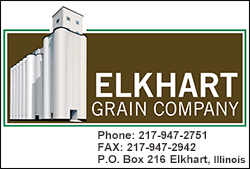|
 The usual rules of supply and demand between
farmers and consumers have been disrupted by a problem with the
middleman: processing plants and slaughterhouses. The usual rules of supply and demand between
farmers and consumers have been disrupted by a problem with the
middleman: processing plants and slaughterhouses.
“Our system is so efficient and streamlined that everything moves at
the same flow,” says Travis Meteer, a University of Illinois
Extension commercial agriculture educator. “But when you have a
kink, all of a sudden, that flow stops.”
Processing
Meat processing plants are considered critical infrastructure and
have remained open. But with several commercial packing plants in
Illinois closed or working at a reduced capacity, thousands of
cattle and pigs are waiting to be processed. Small-scale regional
processors are still operating, but most are booked well into fall.
Cases of COVID-19 in the work force have forced plants to close to
follow CDC recommendations for cleaning and inspections, and some
staff are simply not reporting for shifts out of fear of getting
sick, Meteer says.
“The price of meat is going up but the price [farmers] are receiving
is going down,” Meteer says.

The beef cattle industry nationwide is projected to lose $13.6
billion due to COVID-19. Those who can find a buyer are taking
losses of $216 to $146 per animal. Illinois Extension commercial
agriculture educator Teresa Steckler has heard as high as $700.
Production
Livestock managers can use different feeding strategies to hold
animals at a certain weight or slow gains until processing plants
are ready.
“With packing plants closed, fat steers are sitting in the feedlot
with nowhere to go,” Steckler says. “So, you have to keep feeding
them.”
Holding and feeding market-ready animals incurs extra costs
producers may not be prepared for. At Southern Illinois’ Dixon
Springs Agricultural Center, where Steckler works, recent dry falls
and cool, wet springs have reduced the quality of the local hay
supply. "Some of these guys are finding that their supply of
feedstuff is dwindling,” she says.
And as shoppers’ food budgets shrink, they are buying less expensive
cuts, such as hamburger, over prime cuts, resulting in less profit
for producers. Dale Hadden runs a grain and cattle farm with his
family in Jacksonville and serves on the Cass-Morgan County Farm
Bureau board.
“There’s not a place to market our calves, so we continue to hold
them with grass and hay and get them to weights a little heavier
than usual,” Hadden says. He’s also looking ahead to September when
he’ll be selling most of his 280-head herd. “If this doesn’t turn
around, that’s going to have a huge impact on how I generate any
income.”
Consumption
Dairy: In the U.S., 60% of butter goes to restaurants. When
schools and restaurants closed to slow the spread of the virus, the
sales of food-service dairy products plummeted, and there were
suddenly too many cows producing too much milk.
Hadden says dairy manufacturing facilities are set up with lines to
package milk into jugs for grocery stores, cartons for schools, or
bags for food service. Dairy has a short window for processing and
there are only so many gallons that can be held. “They’re dumping it
because the processors don’t have demand for those products,” Hadden
says.

Pork: The Illinois pork industry contributes an estimated
$13.8 billion to the state's economy, according to the Illinois Pork
Producers Association.
Toni Dunker is a price risk manager with Advance Trading in Quincy.
She works with hog farmers to sell pigs for the best price once they
reach market weight, starting around 260 pounds. As of April 28,
plants they ship hogs to were working at a 60% capacity.
“That hog continues to grow every day, and once it gets past a
certain size, they can no longer process it,” Dunker says. “It’s too
big for the equipment.”
[to top of second column] |

Hog producers have a tight timeline to maintain
productivity and safety for their animals. They cannot be held like
cattle, leaving some producers with no other option but to euthanize
animals. Holding market-ready swine also means there are fewer
places to raise piglets, reducing the future supply, Dunker says.
Eggs: University of Illinois animal sciences
professor Ken Koelkebeck specializes in poultry production. With 6
million laying hens, Illinois is considered a small commercial egg
producer.
Wholesale egg prices jumped from 94 cents to $3.01 a dozen from
March to April. The demand for consumer eggs has skyrocketed with
people cooking and baking at home more, causing grocery stores to
limit shopper’s purchases.
“There has also been a disruption in the supply of cartons,”
Koelkebeck says. “Demand was so high and there’s only two or three
companies that make these cartons. They couldn’t keep up.”
Egg plants are highly automated and need fewer workers, so they
haven’t had issues with shutdowns like pork and beef plants. With
dozen-sized cartons in short supply, eggs are stockpiled at plants
on 30-count flats, which usually go to restaurants. Now, some eggs
may be sold in generic, unlabeled cartons.
Poultry: Some states have culled flocks of laying hens
because of the lack of demand of eggs from the service industry.
Illinois does not have any commercial poultry processing plants, so
chickens and turkeys are trucked to Iowa or Indiana. Illinois
farmers raise 5 million turkeys a year under contracts with
companies. They have scaled back poults by 15%.
“It’s more of a market disruption rather than completely shutting
down,” Koelkebeck says. He expects as pork and beef products become
less available, consumers will buy more poultry, so producers will
raise more birds.
Why are livestock being euthanized?
Euthanizing livestock is a worst-case scenario for farmers. “These
are hard decisions for producers to make,” Meteer says. “That’s a
farmer’s nightmare; to euthanize an animal they put care and money
and time into, and not see it turned into a food product that
nourishes someone.”

Farmers are spending more money to feed and care for animals, with
no guarantee they can sell, and at what price. If an animal
continues to gain weight, it can also increase risk of lameness,
Meteer says.
Dunker says her daily conversations with swine producers have
changed from how many pigs will be heading to processing plants to
how many loads have been canceled.
“It’s such a challenging time for farmers emotionally, because their
focus is to make sure that pig, from the time it’s born to the time
it leaves, is healthy and vibrant.” Now, they must consider the
unimaginable. Hadden says cattle farmers have options with calves,
but for full-grown cattle already on feedlots, producers are calling
processors as far away as Colorado.
What’s next for consumers?
Beef and pork suppliers have a backlog of frozen product that is
making its way onto shelves, but there may not be as much variety as
in the past. Some stores are limiting meat and egg purchases to
prevent stockpiling.
Illinois has the third most farmers markets in the nation, most of
which will open in May with new regulations in place. Shoppers can
find locally produced meats there or even purchase a side of beef
directly from a local butcher.
“It gives us a nice market to move some of our animals,” says Hadden,
whose direct sales have already doubled this year. Consumers have
called wanting to buy freezer beef because they can’t find it at the
store and they’re willing to wait for it to be processed locally.
“Is that pragmatic for the entire U.S.? No, but for people in more
rural areas, it is,” Steckler says. For some, this may be a chance
to try plant-based meals, grow a victory garden, invest in a
community-supported agriculture subscription, or raise backyard
chickens.
[Sources: Travis Meteer, Commercial
Agriculture, Illinois Extension | Teresa Steckler, Commercial
Agriculture, Illinois Extension |
Ken Koelkebeck, Animal Sciences Professor, University of Illinois.
Writer: Emily Steele, Media Communications Coordinator, Illinois
Extension] |